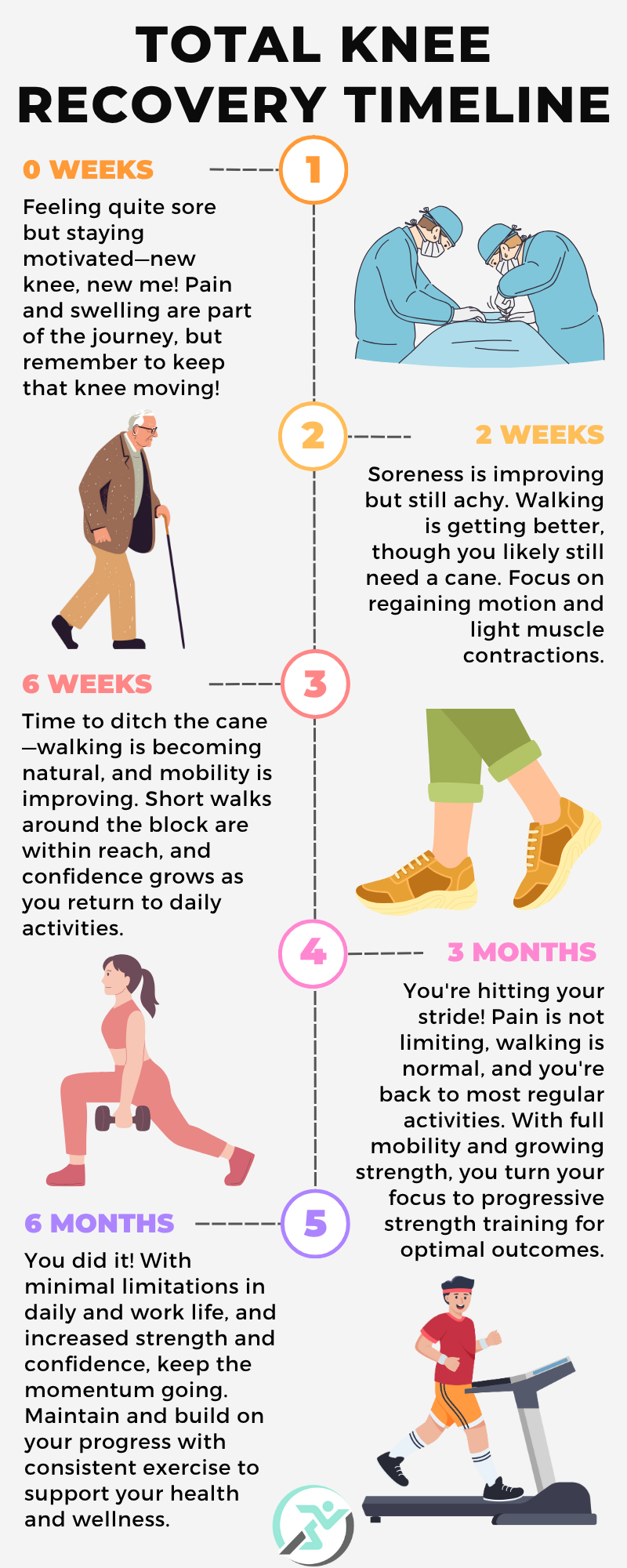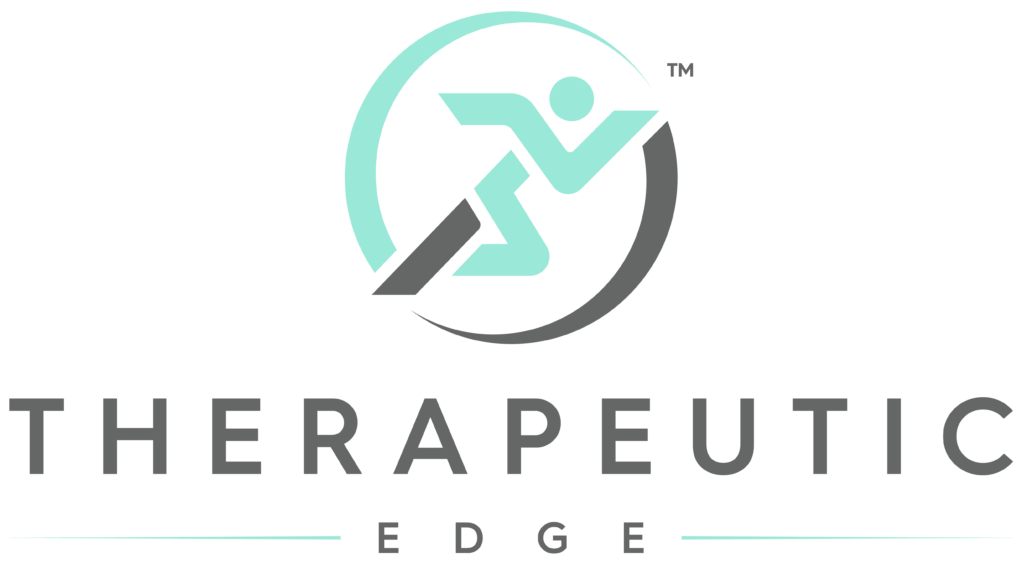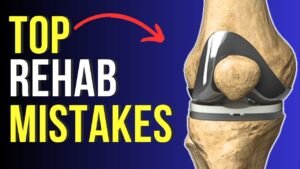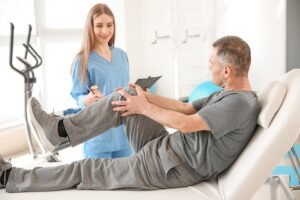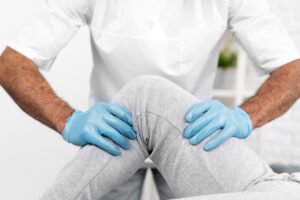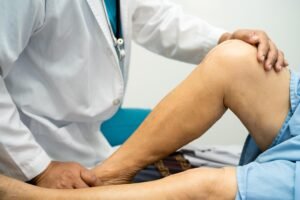Recovering from a total knee replacement is a journey that requires patience, effort, and a clear understanding of what to expect at each stage. With a roadmap in hand, you can navigate the ups and downs of recovery more confidently and effectively. Here’s a comprehensive guide to help you through the process, broken down by key milestones.
0-2 Weeks: Getting Started
What to Expect:
-
Pain and Swelling: These will be most intense during the first few days post-surgery. Pain management through prescribed medications and consistent use of ice packs will be key.
-
Mobility: You’ll likely use a walker or crutches for support as you start moving around. Early physical therapy sessions will introduce simple exercises to maintain circulation and prevent stiffness.
-
Incision Care: Keeping your surgical site clean and dry is critical to avoid infections. Follow your surgeon’s wound care guidelines meticulously.
Milestones:
-
Basic Movements: Exercises like ankle pumps and heel slides will help improve circulation and gently move the knee.
-
Short Walks: With assistance, begin walking short distances around your home to encourage blood flow and mobility.
How You Might Feel:
Expect soreness and fatigue as your body adjusts to the surgical trauma. Rest is important, but so is consistent gentle movement to prevent stiffness and complications.
2-6 Weeks: Early Recovery
What to Expect:
-
Pain and Swelling: These should gradually reduce, allowing you to taper off stronger pain medications to over-the-counter options.
-
Mobility: You’ll transition from a walker to a cane as your strength and balance improve. Physical therapy sessions will introduce more challenging exercises to build strength and flexibility.
Milestones:
-
Improved Walking: You’ll be able to walk more confidently and for longer distances with less reliance on assistive devices.
-
Greater Range of Motion: Aim for at least 90 degrees of knee flexion by this stage, with steady improvement as you continue exercises.
How You Might Feel:
With pain decreasing and mobility improving, you may feel a boost in confidence and optimism about your recovery progress.
6-12 Weeks: Mid-Recovery
What to Expect:
-
Pain and Swelling: Both will be significantly reduced. Occasional discomfort might still occur with more strenuous activities.
-
Mobility: You should have full knee range of motion by the end of this stage and be walking independently without assistive devices and regaining stability and confidence in your movements.
Milestones:
-
Daily Independence: By now, you’ll be handling routine tasks like grocery shopping, light housework, and even driving.
-
Strength and Flexibility: You’ll focus on building muscle strength and improving your knee’s range of motion with advanced physical therapy exercises.
How You Might Feel:
This is the phase where you start to feel more “normal.” With better mobility and less pain, you’ll likely feel more active and eager to return to your regular activities.
3-6 Months: Later Recovery
What to Expect:
-
Pain and Swelling: Both will be minimal, though you may notice some discomfort after high-impact activities or prolonged periods of standing.
-
Mobility: You’ll be walking naturally, with little to no restrictions on most activities.
Milestones:
-
Resuming Work and Hobbies: You can typically return to more demanding work and leisure activities like gardening or hiking.
-
Reclaiming Your Range of Motion: Your knee should feel stable and have near-complete range of motion by this stage.
How You Might Feel:
With most of your strength and mobility restored, you’ll feel more capable and empowered to take on a variety of physical tasks.
6+ Months: Long-Term Recovery
What to Expect:
-
Pain and Swelling: These should be resolved entirely, with only occasional mild discomfort during strenuous activities.
-
Mobility: You’ll have full strength and flexibility, allowing you to engage in activities like swimming, cycling, and even light sports.
Milestones:
-
Complete Recovery: By now, you’ll feel fully recovered and ready to resume a full range of activities without hesitation.
-
Ongoing Maintenance: Incorporate regular exercises to maintain strength, flexibility, and overall knee health.
How You Might Feel:
Most people feel a renewed sense of freedom and confidence, able to enjoy life without the limitations of knee pain or restricted mobility.
Therapeutic Edge
Recovery from a total knee replacement is a process, but with the right strategies, it’s a highly rewarding one. Your new knee is an investment in your health, so take the time to care for it, and soon, you’ll be back to doing the activities you love most!
